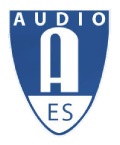 The Audio Engineering Society (AES) has published a new multipart version of its standard for audio-embedded metadata, AES41. The standard allows useful information about the audio to be embedded directly in the audio sample itself, where it can be accessed by whatever device is receiving and processing the signal. A new addition to AES41 allows for the carriage of loudness and true peak metadata as used in R 128, the EBU Loudness Recommendation. This means that audio can now be sent uncompressed, with EBU Loudness metadata embedded within the audio signal.
The Audio Engineering Society (AES) has published a new multipart version of its standard for audio-embedded metadata, AES41. The standard allows useful information about the audio to be embedded directly in the audio sample itself, where it can be accessed by whatever device is receiving and processing the signal. A new addition to AES41 allows for the carriage of loudness and true peak metadata as used in R 128, the EBU Loudness Recommendation. This means that audio can now be sent uncompressed, with EBU Loudness metadata embedded within the audio signal.
R 128 indicates that the simplest way to manage the loudness of broadcast audio is to normalize it at source, to a single target level (-23 LUFS). However, it is accepted that some workflows use metadata to indicate loudness, and require that metadata to be carried through the production chain to the receiver. This enables normalization at a later stage, e.g. in the receiver in the home. In production Dolby E is the prime example, allowing multichannel audio to be carried on a stereo infrastructure, together with loudness and other metadata. The metadata can then be handed over to AC-3 or MPEG 4 audio encoders for delivery to the home.
The latest version of AES41 adds three new parts, describing the data format for the metadata to embedded. In addition to EBU R 128 (which is covered in Part 5), the standard now also specifies data formats for AAC/HE-AAC (Part 3) and Dolby E (Part 4).
The individual parts of the standard, or the whole set of documents, can be downloaded from the AES website. (A fee is payable by non-members.)
